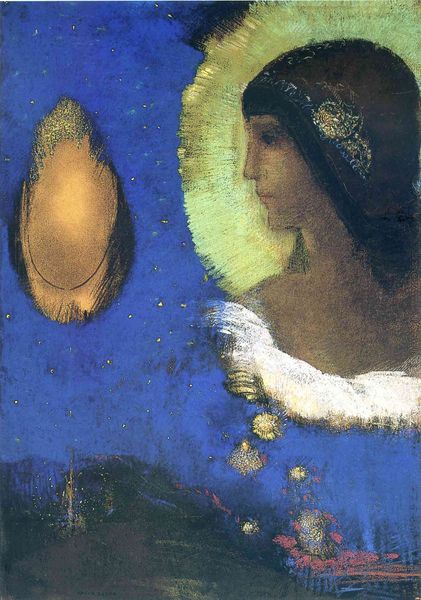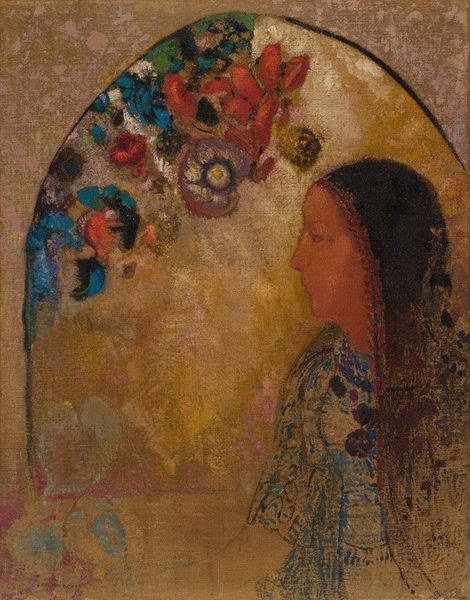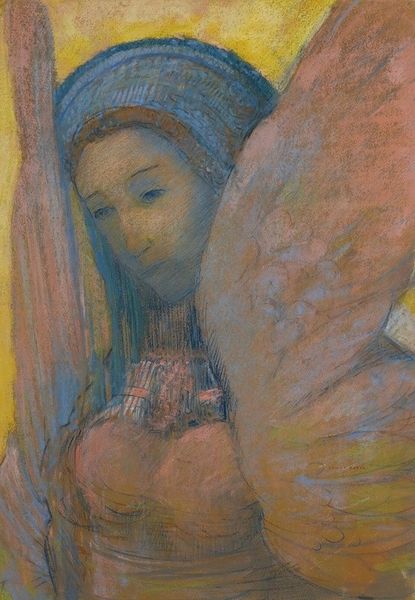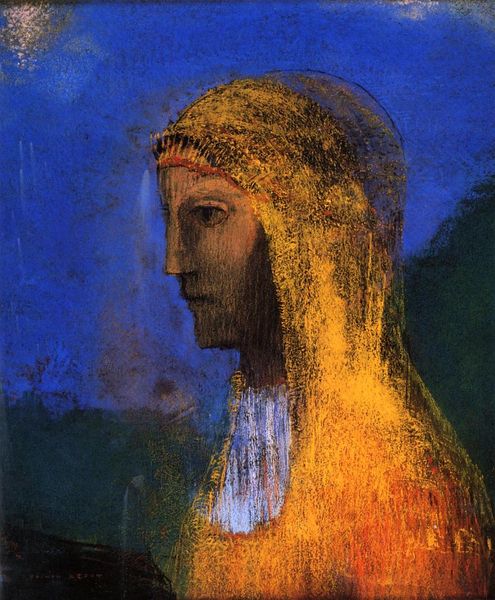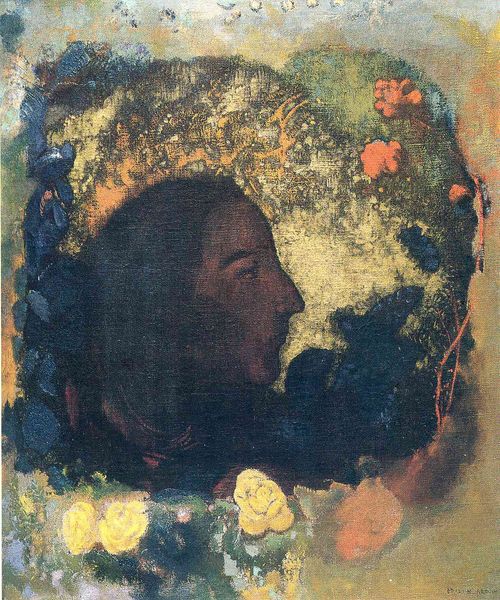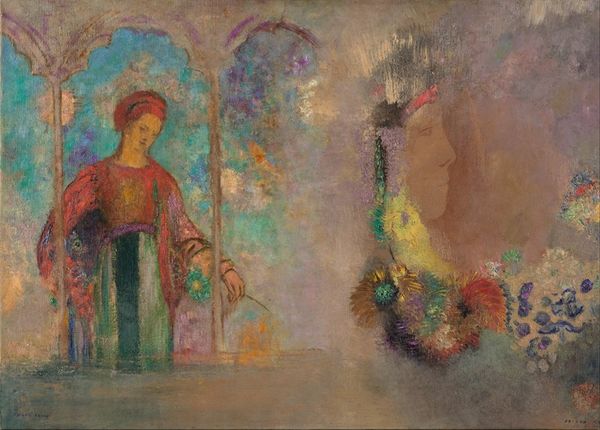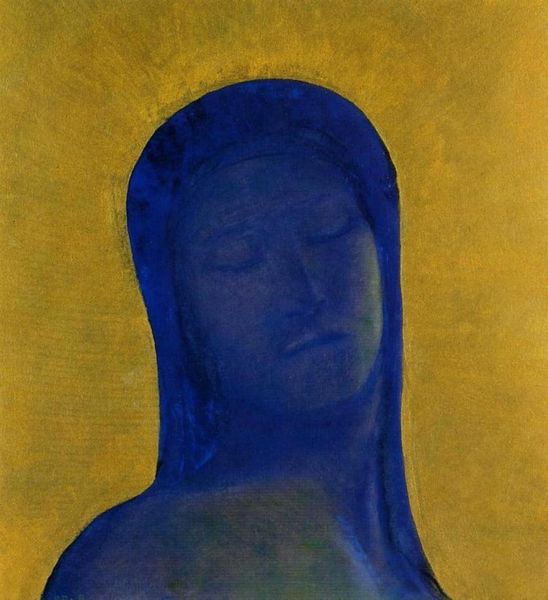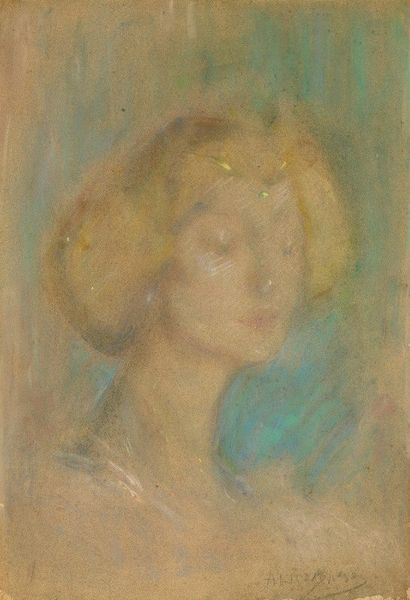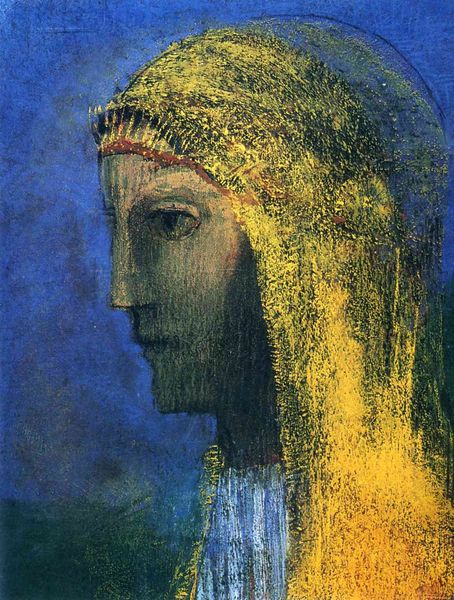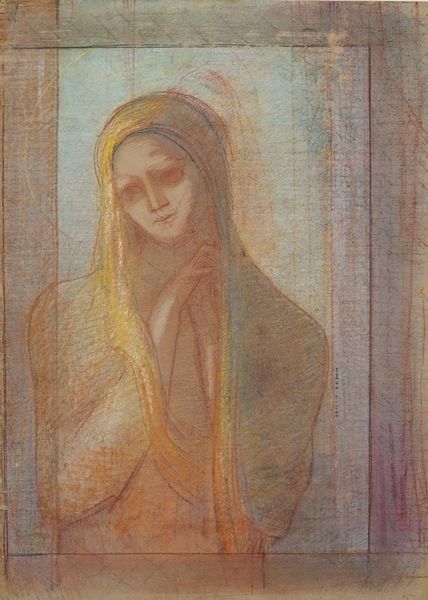
Copyright: Public Domain: Artvee
Curator: This is "Sita," a pastel on paper created by Odilon Redon between 1882 and 1898. Editor: Wow, what strikes me immediately is the color palette. That deep, almost suffocating blue contrasted with the pale luminosity around her head is quite arresting. It gives a dreamlike quality to what otherwise seems like a traditional portrait. Curator: Indeed. The visible strokes of pastel are intriguing too; it looks like Redon layered them quite deliberately to achieve that otherworldly effect. One wonders about the sourcing of the materials; did Redon experiment with various types of paper and pigment? The facture seems really important here, contributing so much to the visual texture and light. Editor: Absolutely. And “Sita” is, of course, a key figure in the Hindu epic the Ramayana. Seeing her rendered in this style asks us to reconsider Orientalism and its legacies, doesn't it? How might Redon's depiction engage with or even subvert the male gaze, or the French perception of Eastern mythology at the time? Curator: Precisely. Consider also the labor involved; the production of pastels was itself tied to industrial processes, transforming raw minerals into art material. Then consider the social class that consumed such pastels - how the luxury of materials became a statement. Redon wasn’t only producing art, but engaging in a larger economic system of material consumption. Editor: I agree. Her gaze avoids ours, directing our focus instead toward her internal world, a move that grants Sita some agency within the painting. The halos, or emanations, challenge us to understand what elements and gestures were read as feminine or spiritual then. What social scripts are at play? What power structures are mirrored and refracted in the construction of this portrait? Curator: The luminosity you point out highlights how significant color mixing would be in crafting visual harmony and balance; what Redon does expertly, which also contributes to the sense of symbolic richness we often ascribe to Romanticism. Editor: I hadn’t thought of it that way, but you’re right! It makes me appreciate Redon's awareness of the sociopolitical narratives embedded within these cultural archetypes even more. It also helps clarify how we, as contemporary viewers, inherit these complex relationships. Curator: Ultimately, observing Redon’s "Sita" means recognizing the hand of the artist, the history of materials, and how intertwined production is with meaning-making. Editor: And reflecting on our own positionality within history. It reminds us that even a dreamy image holds social weight and responsibility.
Comments
No comments
Be the first to comment and join the conversation on the ultimate creative platform.
